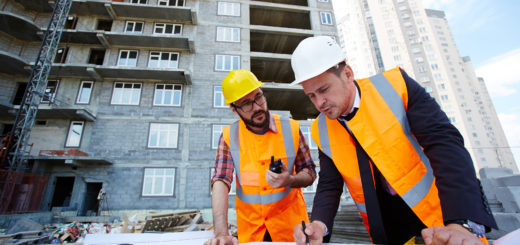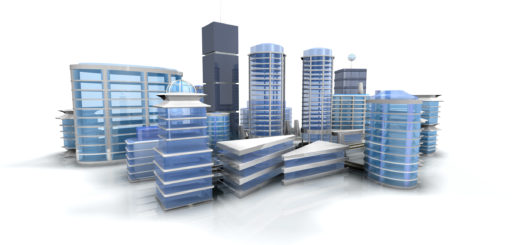Beyond the Blueprint: Exploring Eco-Friendly Materials in Modern Architecture
Architecture has grown by leaps and bounds in recent years, with sustainable designs gaining momentum. Designers, builders, and architects are now keen on exploring green and environment-friendly construction materials.
In the past, a majority of architects preferred traditional building materials such as brick, concrete, and steel. The research(Use of sustainable green materials in the construction of green buildings for sustainable development) has proven that these materials were a leading contributor to environmental damage even though they were reliable and sturdy.
The rise of eco-friendliness and sustainability has spurred architects to use sustainable materials like bamboo, wood, and recycled steel, as they have a lower environmental impact.
However, one might ask, ‘If an Architect can Build a Building, Why do they Need a Civil Engineer?‘ Architects create the designs, while civil engineers play a crucial role in making sure the designs are structurally sound and successfully brought to life in the real world.
Let’s explore how modern architects of today are going beyond the blueprint by opting for green building materials.
Eco-Friendly Building Materials:
-
Wood
Most architects choose wood because of its ubiquitous popularity and biodegradability. It is readily available and sustainable, adding to its appeal in sustainable architecture design.
In addition to its versatility, this material is compatible with a wide range of structures, and because of its excellent insulation properties, it offers excellent protection from a wide range of climates and weather conditions.
-
Bamboo
Another popular eco-friendly construction material is bamboo, as this is also renewable and sustainable. It is a fantastic alternative to traditional building materials like concrete, which have a detrimental environmental impact.
In contrast, bamboo is not just sturdy and long-lasting but also lightweight. This makes it easy to transport to far-off locations. Additionally, it is cost-effective, making it the perfect choice for mass-produced houses.
-
Recycled steel
Recycled steel is also gaining popularity among architects interested in utilizing eco-friendly building materials. Regular steel can have a significant environmental impact during production. Recycled steel, on the other hand, is more sustainable than traditional steel. By using recycled steel, the amount of energy can be significantly reduced, making it an ideal choice for architects. Recycled steel is loved by architects as it is durable, resistant to fire, and can be used in a wide variety of applications.
-
Mycelium
Mycelium is yet another eco-friendly construction material that is used nowadays. This material is used as an alternative to traditional insulin material. It is not only lightweight but is easy to find and can be grown in a controlled environment as it is a fungus.
Eco bricks: These bricks combine mycelium, the root structure of fungi, with organic waste materials like agricultural residue or sawdust. This makes the material ideal for mass production. As it is biodegradable, bamboo contributes to soil regeneration.
-
Rammed earth
Rammed earth, a unique green building material made of soil, cement, and gravel, is both durable and sustainable. Not only is it easy to produce, but it can be used in different types of construction. This material boasts excellent thermal insulation properties and fire resistance, making it an ideal option for construction in hot and arid climates.
-
Solar tiles
Solar tiles are materials that are created from photovoltaic cells that can create electricity from sunlight. These tiles are light in weight and come in a wide variety of colors. This makes it an ideal choice for architects looking to integrate solar power into their building projects. These solar tiles not only help in energy reduction but also offer an eco-friendly alternative to traditional roofing materials.
Learn about sustainable architecture:
As an architect in today’s world, you need to learn how to use green building materials as opposed to traditional building materials. It is possible to create sustainable, stunning, and innovative building designs by learning how to use eco-friendly construction designs.
If you’re a builder or aspiring architect, you can learn sustainable practices by enrolling in an architectural design course at CADD Centre. Throughout the building design training course, you will learn how to create a sustainable future by using green building materials in your projects.
You will get to learn in-depth information on how to reduce waste, conserve resources, and create energy-efficient buildings. At the end of the architectural design course, you can expect a significant improvement in your practices for environmental preservation.
Learning about sustainable architecture can also help you master advanced technologies like 3D printing and building information modeling.
Such technologies can aid you in creating more sustainable and efficient designs while reducing waste and cutting back on construction time. Investing in sustainable architecture can also help you provide more social and economic benefits to your customers.
A building built on the principles of sustainability can reduce the money spent on energy, improve the quality of indoor air, and even promote a healthier lifestyle.
Choosing to construct with sustainable materials can lead to a significant decrease in carbon footprints, minimize resource depletion, and foster a healthier environment. Make a smart choice today and sign up for an architecture design course from CADD Centre.



